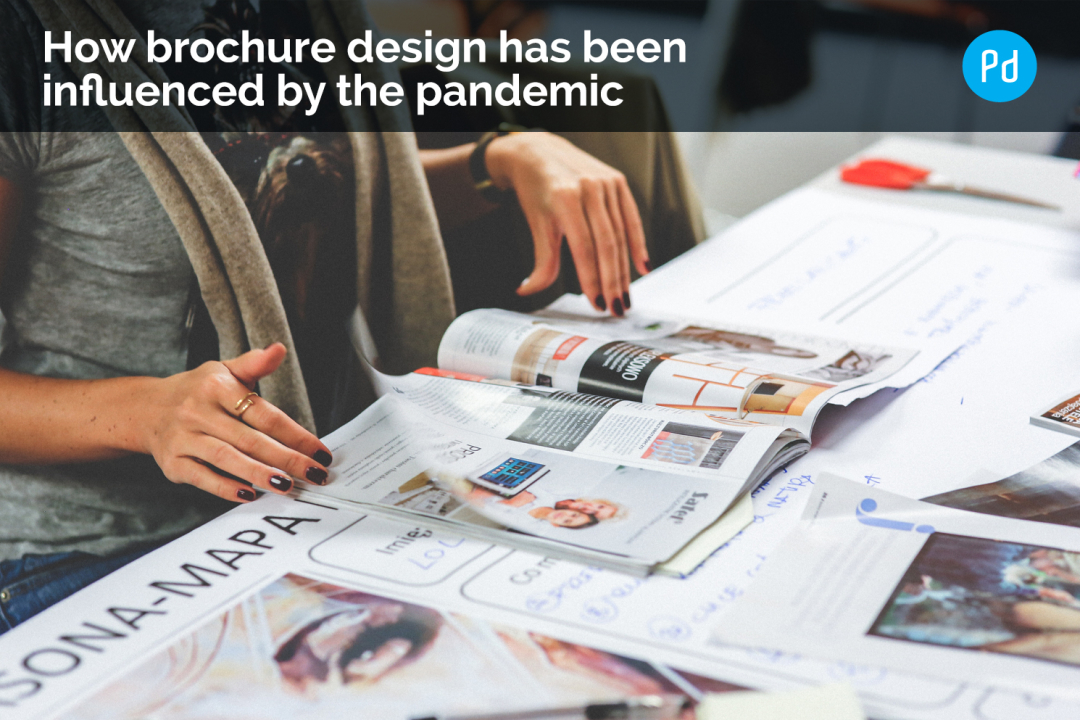How brochure design has been influenced by the pandemic
There’s virtually no aspect of life that hasn’t been touched in one way or another by the pandemic, and this includes, of course, businesses. There were many challenges that had to be overcome to ensure that business continued as close to normal as possible, including how the company shared information. With the normal way of doing things temporarily unavailable, historically straightforward processes, such as producing literature, had to change.
In this blog, we’re going to take a look at how brochure design has been influenced by the pandemic. We’ll touch upon factors such as how business owners had to find new ways to share information, the different tones that were needed (such as reassurance), and the shift in the content of the literature (new operational methods, opening times, and so on).
How Did Things Change?
It quickly became apparent that the pandemic was going to last longer than two weeks. And that means there would be serious implications for businesses. When it comes to sharing information, business owners and marketing experts had to rethink how they were going to share crucial information about their business with their customers.
With more and more people staying at home, the need for printed materials became less obvious. As such, many businesses ceased producing brochures altogether, instead choosing to share their content online. Even companies that have historically shied away from producing digital materials began publishing their documents in electronic formats. One of the most common methods for doing things was through the use of animated page-flip PDF brochures, which in many ways functioned in the same way as a paper brochure. In this sense, brochure design in a pandemic remained the same — it’s just how that content was delivered that saw a change.
Reassuring Customers
The world was turned upside down when the coronavirus pandemic struck. And people were naturally concerned and anxious about, well, all aspects of their lives. And this includes how it would impact the relationships they had with their businesses to whom they gave money.
As such, brochure design had to take on a new function, which was to reassure their customers that service would continue as close to normal as possible. Rather than simply advertising products or services, brochures became vehicles through which businesses were able to explain to their customers how the pandemic had impacted operations and the new measures that the company had enacted to ensure that orders and services were being fulfilled safely and on time.
Of course, there’s another side to brochures in the pandemic, too. Many businesses lost a lot of revenue over the past year. Indeed, many companies’ income fell off a cliff from virtually day one of the pandemic. This meant that was an additional pressure on sales and marketing teams to produce literature and content that would help to claw back some of the lost revenue.
The success of the brochure became more crucial than ever (in the sense that the success or failure of the brochure could make or break the business). And so increasing engagement was key. For designers, this meant that they had to come up with new and creative ways to present the content in a visually appealing way in a bid to keep readers engaged.
The Content of Brochures During The Pandemic
Businesses might have hoped that the coronavirus pandemic would just disappear, but it was not, of course, something that they could ignore. While historically, they may have produced brochures that spoke simply of the quality of their products or services, that was no longer possible with the arrival of COVID-19, which functioned as the elephant in the room.
When putting together brochures, it was imperative to mention the pandemic. This was especially evident in the industries that were impacted in a more direct way than others. For example, hospitality and events businesses had no choice but to diversify their businesses to survive. It wouldn’t be possible to mention this shift in direction without discussing why it was happening.
Similarly, it was essential for businesses to share information about how their operations had changed. For example, restaurants began offering takeaway menus, offering outdoor service, and so on. Safety was also a big concern, with people wanting to know which safety measures were in place. This had to be communicated through the marketing materials.
These are just a few ways brochure design has been influenced by the pandemic. What will the future hold? Hopefully, the coronavirus soon departs and companies can focus on the brochure design of their choice, without the constraints of the pandemic.



